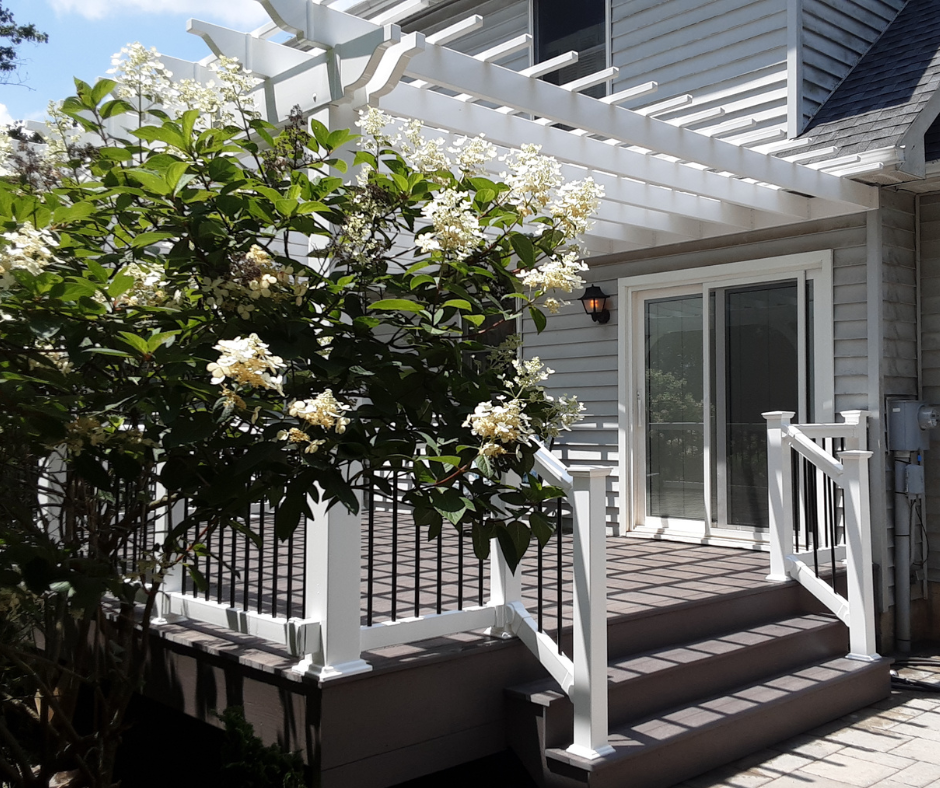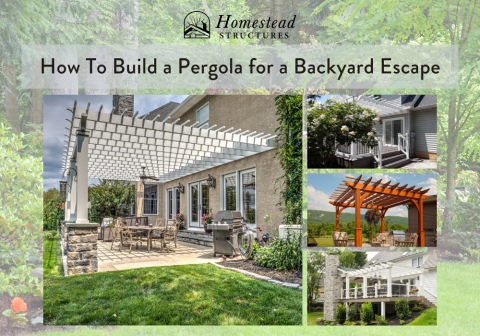A pergola is an incredibly useful feature for your backyard. It provides a shaded area where you can rest on warm days while still enjoying fresh air and sounds of nature. A pergola is different from a gazebo because it doesn’t provide full coverage against the sun. There are open slats that let light through the roof — unlike the closed roof of a gazebo.
A pergola is something you can enjoy throughout the year on your own, but it can also create a space in your backyard for hosting parties, milestone celebrations, or even weddings. It is a wonderful asset that can increase the value of your home and make living in your space more comfortable. Learn how you can build your own backyard pergola blow.
Choosing a Pergola Location
Start by walking around your backyard to choose the best location for your pergola. You want to choose a space that has good drainage so your lounge area won’t get flooded when it rains. This often means looking for higher ground in your yard to build on.
You also need to consider how the sun hits your yard. If you place your pergola in an overly sunny place, it could get hot during the day or the sun could blind your guests when it is rising or setting.
Look for a semi-shaded area that has a little elevation or good drainage. This will keep you comfortable and support the structure of your pergola.
Design Your Backyard Pergola
There are three key design elements of a pergola: the flooring, the support beams, and the roof. The roof slats will let light through but will also provide enough shade to give you a break from the hot sun during the day.
As you develop your design, consider how big it will be, the height of the roof, and the materials you will use. You can also customize the materials you use, including the wood type and color.
One of the best ways to choose the best pergola design is to look at what is already out there. Check out design blogs and catalogs to learn more about your options. You can even track the #backyardpergola hashtag on Instagram for inspiration. Decide which elements you love and want to incorporate into your home.
Obtain the Right Equipment
You need more than just wood and nails to complete your project. There are multiple types of materials, tools, and safety equipment needed to safely build one of these structures. Make sure you have all of the necessary equipment before you begin so you don’t have to run to the store mid-project because you forgot an essential item.
Materials Needed To Build a Backyard Pergola
Here are some of the materials you will need to construct your backyard pergola. Make sure you have enough to build the structure without overpaying for excessive materials you don’t need.
-
Wood: This is one of the most common materials used to build pergolas. Learn about your wood options, including vinyl or wood materials, and how to choose weather-resistant materials.
-
Cement: This is used to anchor the support beams and can also be used to create a floor for your structure.
-
Nails and screws: Consider how you will assemble your pergola and the types of support materials you need.
You want your pergola to last for several years, so make sure you avoid low-quality materials or materials that aren’t designed for your region. In most cases when considering a pergola, you will choose between wood and vinyl. You’ll have to weigh the pros and cons of weather conditions for your region, cost, lifespan, and more. You don’t have to buy the most expensive materials, but treat this structure as a long-term investment.
Tools Needed To Build a Backyard Pergola
Once you have your materials on hand, you can move on to selecting the right tools for the job. Your tools are used to handle the materials that make up your structure. A nail is a material, a hammer is a tool. Here are a few tools you should purchase or rent to complete this structure:
-
Measuring tape
-
Power saw
-
Bucket to mix and pour cement
-
Hammer
-
Drill
-
Support structures to hold up the beams
-
Ladder
-
A level to measure straight lines
Each pergola project will require different tools, but these are the items that most of them will need.
Get Necessary Building Permits
Depending on where you live, a pergola could be considered a permanent structure that needs city approval before construction. You also might need to get permission from your homeowner’s association to install this backyard accessory.
Start with your HOA. Check your bylaws to see if there are any requirements for new structures and whether a pergola falls under that category. Then check your local building codes. You might need to submit blueprints to your city and pay a small fee to secure a permit. Every city is different and has guidelines for what needs approval.
Keep in mind that both cities and HOAs have restrictions based on size. You might need a permit for a 10-foot by 10-foot pergola but an eight-foot by eight-foot model is fine.
Measure Your Materials and Building Location
 There are two aspects to consider when measuring the space needed to build a pergola: the dimensions of the support beams and the dimensions of the roof slats.
There are two aspects to consider when measuring the space needed to build a pergola: the dimensions of the support beams and the dimensions of the roof slats.
It’s not uncommon for the roof of a pergola to extend beyond the support beams in order to create more shade. This also gives you more flexibility in where you place it. For example, the support beams might be installed in a six-foot by eight-foot rectangle but the roof would be eight feet by ten feet. Make sure your space can accommodate the full structure.
You can measure your intended space with a simple measuring tape; however, some homeowners prefer to use string and flags to create a mock-up of this structure in their backyards before building it.
Start Building Your Backyard Pergola
Once you have your plans and permits in place, you can start to move forward with the construction process. Here are a few essential steps to consider when beginning construction:
-
Measure twice. It is worth it to double-check all of your measurements as you build your pergola so everything fits in place.
-
Start with the foundation. Make sure you are happy with the flooring of your pergola, whether you are installing a cement slab or building a wood porch.
-
Dig a deep enough hole to ground the support beams. You can also weigh them down with cement to create a more stable structure.
-
Test the stability. Make sure your pergola is secure and won’t move in the event of a storm.
-
Stain or paint your pergola. You can either buy wood that matches your color preferences or paint your pergola as you assemble it.
You don’t have to do this project on your own. You can invest in professional services to build your pergola for you if you feel more comfortable with that option. Overall, a pergola can be a great addition to your backyard and make spending time outside more enjoyable, so it is a worthy project to invest in.

Facebook Comments Box